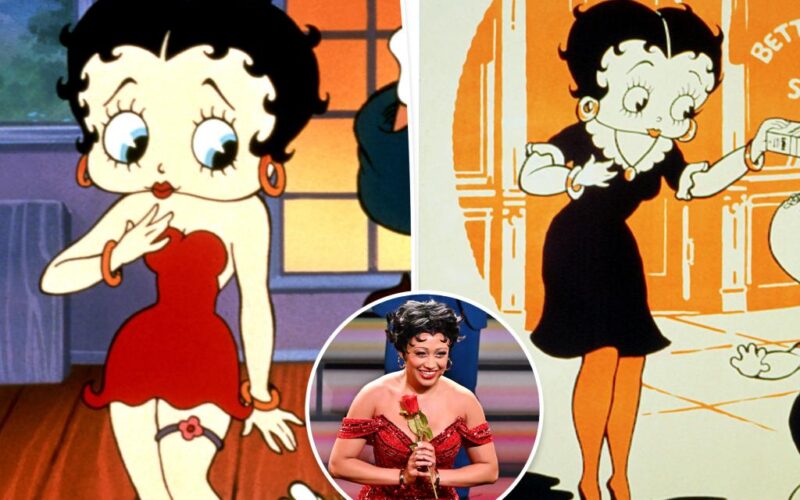The new musical comedy “Boop,” which opens this weekend on Broadway, is one of the year’s few family-friendly shows.
There’s no cursing and nothing’s offensive — just like you’d expect from a song-and-dance dazzler adapted from a harmless cartoon character.
But Betty Boop, the 1930s icon the show is based on, was once considered far too sexy and risque for wholesome and impressionable eyes.
Poor Betty was a victim of the Hays Code, or the Motion Picture Production Code, which in 1934 banned profanity and curtailed violence and sexual content in movies — even animated movies.
Among many harsh restrictions, the Code put a stop to naughtiness in Hollywood. Nudity was a no-no. The rules even cautioned against “excessive and lustful kissing.”
At the character’s peak, her iconic look that’s still well-known today was a flapper minidress, hoop earrings and a garter above the knee. Drooling men lusted after Betty and chased her around the room.
On one occasion, she was a topless mermaid. In another short, she wore only a hula skirt and a flower lay which concealed certain sensitive areas.
Then the Code was enacted.
Over the course of a decade, according to the Journal of Design History, Betty evolved from a “flapper-secretary-adventurer” to a “middle-class homemaker.”
By 1935, gone was the garter, and the shoulder-less dress was swapped for a less revealing frock. Betty was made taller and older with a new hairdo.
A 1938 article in the Central New Jersey Home News headlined “Betty Boop Goes Modern” describes the toon’s transformation.
“Before swing came, Betty Boop, a product of the ‘jazz age,’ embraced all the qualities of the era — curls, bangs, earrings, bracelets and curves,” it began.
“But times have changed and with it Betty’s appearance. The Fleischer Cartoon Studios, creators of Betty Boop, animated movie character, have revamped their star. She’s lost most of her curls, the jewelry — and the curves. She dresses more modestly — censors, you know — and she personifies the typical ‘swing’ fan.”
She no longer lived in an apartment or traveled to tropical locales. The character was instead a domestic housewife.
That modest shake-up goes down well with audiences. By 1939, Boop’s popularity had plummeted and her films stopped being made. A resurgence of fame began in 1955 when the catalog was bought by Paramount. The Hays Code was scrapped in 1968.
Now “boop-boop-a-doop”-ing on Broadway, the red dress and garter are back in all their glory.
And the musical, which stars Jasmine Amy Rogers as a Betty who escapes her TV confines all the way to New York City, cracks a joke about her notorious 1930s makeover.
In one scene, Betty matter-of-factly describes her favorite short film she ever starred in.
“The old man twice my size comes down from a mountain and terrorizes the town, then he starts slobbering and chases me up a tree!,” she says.
“This is a kid’s cartoon?,” asks another character.
“This was before the Code.”








